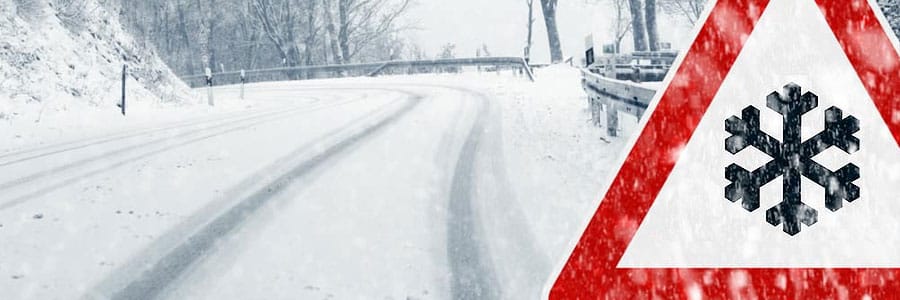Make sure Winter driving doesn't take its toll

Writing these "how to drive" pieces can feel a little condescending sometimes, until you actually read the advice and realise there were bits in there that you hadn't thought about. If that's the case for us then there's an excellent chance there will be something you've forgotten too.
It's been a whole year since any of us had to contend with ice and snow, and for many drivers this will be their first winter experience after passing their test. With the chilliest of seasons rapidly approaching the Institute of Advanced Motorists has defrosted a few driving tips in readiness for the inevitably hazardous conditions to come.
IAM RoadSmart's head of driving and riding standards, Richard Gladman, is offering advice to motorists to better cope with driving on road surfaces that are covered in frost, ice or snow.
- Pay attention to weather forecasts, and in more extreme weather take note of Police advice. If the roads are particularly bad it's always best to not travel at all. If you absolutely must go out then make sure you take your time and be extra careful on icy roads.
- Triple your stopping distance (at least triple, more if possible) and approach every junction expecting to stop well before the line (it can take up to 10 times as long to stop according to Highway Code advice). Keep steering, acceleration and braking inputs as smooth and gentle as possible and select 2nd gear when you pull away in icy conditions to limit the risk of wheel spin.
- Gritting the roads helps but remember that the salt they spread will often make the windscreen, headlights, number plate and rear parts of your car very dirty. Did you know that if your car doesn't have headlight washers you could lose an estimated 40% of luminosity and possibly all their focus in about 20 miles on a damp, gritted motorway? No, we didn't either. To minimise the danger keep your car as clean as possible. If you're travelling long distances keep a cloth and a bottle of water handy to give your lights and mirrors a quick wash.
- Never ignore a warning light. If one appears then get it checked out sooner rather than later. Being stuck on the side of the road is never good, but breaking down in freezing conditions is a high risk situation. And very uncomfortable. So make sure you have a coat to keep you warm.
- Always carry a winter driving kit including an ice scraper, de-icer, blanket, torch, shovel, something to eat and a fully charged mobile phone. Being prepared doesn't mean you have to stockpile tins of beans in a bunker deep in the woods, it's just a sensible precaution.
- When driving on a busy road avoid overtaking gritting lorries as the road ahead may not be treated yet. When you're bonnet is being pebble-dashed by a council lorry it's very tempting but the safer option is always to drop back and increase the gap. If in doubt, don't risk it, and make sure to never overtake a snow plough in heavy snow conditions.
- While roads may be gritted to give you better traction, some areas may not be completely treated which can leave ice patches exposed. Drive at a steady pace, keep your inputs smooth and gentle, and watch out for water running across the carriageway as this can wash away the salt and then freeze over.
- It's important that you keep your car clean throughout the winter as the salt in grit can cause corrosion to any exposed parts. Ensure that you thoroughly wash the underneath of your car when you can to stop salt from settling. Don't forget to wash and rinse alloy wheels too; the smallest scratch can quickly become a large corroded area if the salt gets under the surface.
- Just because the winter sun is out does not mean the roads might won't be icy. Micro climates of icy patches will linger in areas such as bridges and exposed sections, where the sun has not yet reached. Just because a section of road is in the sun doesn't mean there won't be ice.
- Keep the tread on your tyres above 2mm (ideally 3mm) as the more tread you have the more water they can cope with. Letting your tyres get down to the legal limit of 1.6mm is not a good idea at any time, even less so in winter. Don't forget you can always consider winter tyres - or even a set of snow chains - if you are in an area where they will benefit you.
As Mr Gladman says, "Preparation is the key to avoiding a dangerous situation whilst driving in snowy or icy conditions. Don't rely on the performance of your car systems to get you out of trouble - allow time, make sure you have good visibility all round and carry the right equipment. If conditions are extreme remember the best advice is not to travel."
View our latest blog posts

Categories
Pages
We are a family run business based in rural Worcestershire. Our team of 38 staff are on hand to provide an exceptional service to personal and business customers.
Read More
